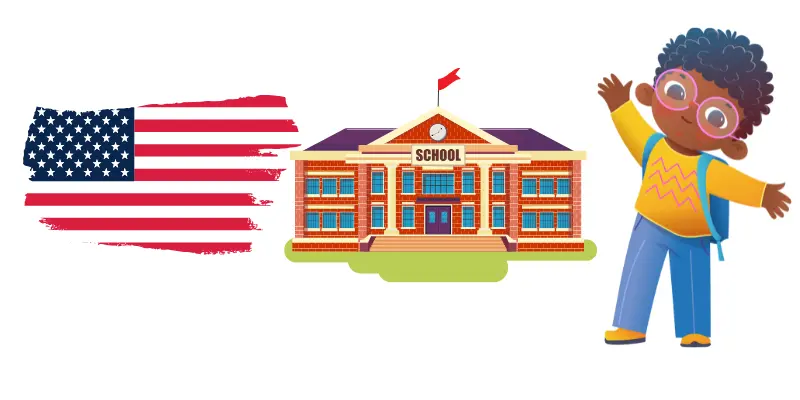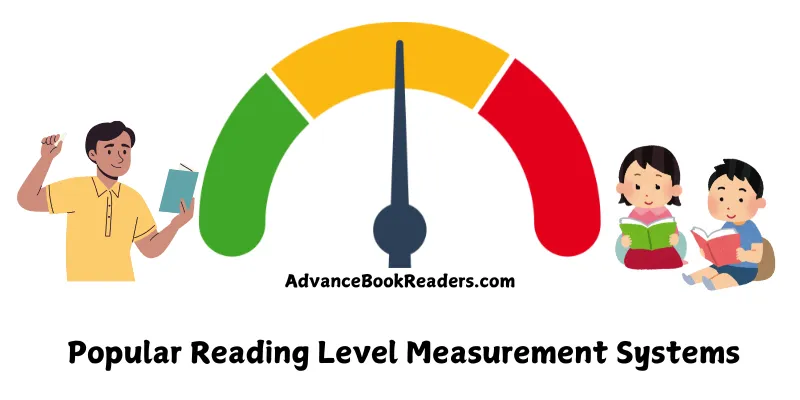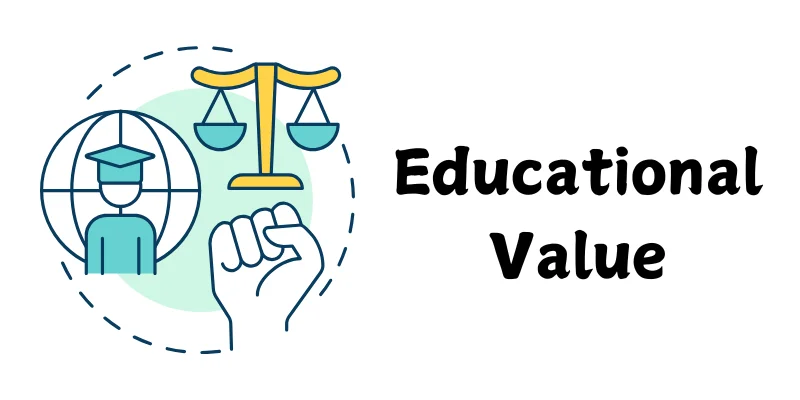What Is the Average Reading Level in the U.S.?
Updated: 07 Jul 2025
195
Did you know that the average adult in the U.S. reads at a 7th to 8th grade level?
That surprises many people — especially teachers, parents, and writers. We often assume that high school graduates read at a 12th-grade level or higher. But in reality, most Americans feel most comfortable reading everyday material written at a middle school level.
Why does this matter?
Whether you’re a parent trying to choose books, a teacher designing lessons, or a business owner creating content — knowing the national reading level helps you reach and support your audience better.
In this article, we’ll break down:
- The actual average reading level in the U.S.
- What it means in terms of grade and age
- Why the level is lower than many expect
- How it affects education, healthcare, and communication
- And what you can do to write and teach more effectively
What Is the Average Reading Level in the U.S.?
According to multiple national studies, including the National Assessment of Adult Literacy (NAAL) and research from the Department of Education, the average American adult reads at a:
🟡 7th to 8th grade reading level

This doesn’t mean Americans can’t understand more complex material. It simply means that texts written at a 7th or 8th grade level are the most accessible and comfortable for the majority.
What Tools Are Used to Measure This?
Most reading level estimates are based on readability formulas. Here are a few commonly used ones:
- Flesch-Kincaid Grade Level: Measures sentence length and word complexity
- Lexile Framework: Scores reading ability and text difficulty based on vocabulary and sentence structure
- Gunning Fog Index: Focuses on sentence length and complex words
- SMOG Index: Predicts how many years of education a reader needs to understand a text
Example:
A Flesch-Kincaid score of 7.4 = appropriate for a typical 7th grader.
Real-World Example
- USA Today and most online health websites aim for 7th–8th grade readability
- Legal documents and academic papers often exceed the 12th grade level — making them difficult for many to understand
- Websites written above 10th grade level lose engagement quickly, especially among mobile users
Why This Matters
When materials are written above the average reading level, many people struggle with comprehension. This includes:
- School instructions
- Medical forms
- Government notices
- Legal agreements
- Business websites
✏️ If you want your message to reach people — it needs to match how they read, not how we expect them to read.
Reading Level by Age & Education Group
To understand the full picture of reading ability in the U.S., it’s helpful to break it down by age group and educational level. While most adults read at a 7th–8th grade level, younger readers, high school graduates, and college students show a range of literacy skills — many of which don’t always align with their years in school.

📊 Average U.S. Reading Level by Group:
| Group | Typical Reading Level |
|---|---|
| Children (8–10 years) | Grade 3–4 |
| Tweens & Teens (11–17) | Grade 5–9 |
| High School Graduates | Grade 6–9 (varies widely) |
| College Students & Adults | Grade 7–10 (on average) |
| General Adult Population | Grade 7–8 (national average) |
📌 Fun Fact: A 2019 U.S. Department of Education report showed that over 50% of adults struggle with texts written above the 8th grade level, especially in real-world situations like job applications or health care forms.
Why Doesn’t More Education = Higher Reading Level?
Many people assume that completing high school or college automatically raises someone’s reading level — but that’s not always true.
Here’s why:
- Reading skills level off if not regularly practiced
- Content complexity varies: A college student studying art history may not regularly read dense technical texts
- Life demands and stress often reduce time spent on reading for pleasure or learning
- Many schools focus on test prep, which doesn’t always improve long-term comprehension or vocabulary
✍️ Reading level is like a muscle. Without regular use, it weakens over time — regardless of how much schooling you’ve had.
Education Doesn’t Always Equal Literacy
A 2022 report from the Program for the International Assessment of Adult Competencies (PIAAC) showed:
- 1 in 6 U.S. adults has low literacy skills
- 43 million adults read below a 6th grade level
- Even among adults with a high school diploma, many read at or below 8th grade
💡 Takeaway for Parents, Teachers, and Writers:
- Don’t assume grade = reading level
- Focus on comprehension and real-world use
- Encourage daily reading — even 15 minutes a day improves fluency
- When writing for the general public, aim for 6th–8th grade readability
Why Is the U.S. Reading Level So Low?
It’s easy to assume that a country with universal schooling should have high literacy — but the reality is more complex. While most Americans can read, many don’t read well enough to process complex texts, especially when it comes to applying information in real life.
So, why is the average reading level in the U.S. only 7th to 8th grade?
Let’s explore some of the biggest factors.
1. Functional Literacy vs. Basic Literacy
First, it’s important to understand a key term:
Basic literacy means someone can read simple sentences.
Functional literacy means they can read, understand, and apply what they read — in real-world tasks like:
- Reading a medicine label
- Filling out a job application
- Understanding a news article
- Following school instructions
Studies show that millions of adults in the U.S. lack functional literacy, even if they can “technically read.”
📌 According to ProLiteracy, 43 million U.S. adults have low literacy skills and struggle with reading tasks beyond a basic level.
2. Unequal Access to Quality Education
The quality of reading instruction varies dramatically by location, income, and school funding. Students in low-income districts often:

- Don’t have enough access to books at home
- Receive less targeted reading support
- Face overcrowded classrooms and outdated materials
This creates a literacy gap between students from different backgrounds — one that can widen over time and last into adulthood.
3. Digital Overload & Fewer Reading Habits
Let’s be honest — people read less today than in the past. With more screen time and bite-sized content like TikTok or YouTube shorts, attention spans are shorter and deep reading habits have declined.
- Teens and adults are reading fewer books
- Scanning headlines is replacing thoughtful reading
- Many rely on video or audio over written material
This weakens long-term reading stamina and comprehension.
💬 “The average American spends 7+ hours on screens daily — but only 16 minutes reading.” – Pew Research Center
4. English as a Second Language
In many homes across the U.S., English is not the first language. While that’s a beautiful reflection of cultural diversity, it also means:

- Millions of students and adults are still building fluency
- Reading academic or advanced texts in English takes more effort
- ESL learners often score lower on standardized reading assessments, even if they’re highly intelligent
5. Limited Support Beyond School
After formal schooling ends, many adults don’t get ongoing help to build their reading skills.
- Adult literacy programs are underfunded
- Many working adults are too busy or embarrassed to seek help
- There’s a stigma around reading difficulties
Without regular practice, reading skills plateau — or decline.
🔑 The Bottom Line:
The U.S. reading level isn’t low because people aren’t smart — it’s because of systemic gaps, shifting habits, and lack of long-term reading support.
How Does Low Reading Level Affect Real Life?
A reading level isn’t just a number — it affects how people navigate the world. From filling out forms to understanding medical advice, millions of Americans face hidden challenges every day because written content is too hard to read.
Let’s explore three major areas where low reading levels create real-world problems:
A. Education: Students Struggle to Keep Up
When students are expected to read materials above their actual reading level, learning becomes frustrating instead of empowering.
Consequences:
- Kids fall behind in other subjects like science or history because they can’t comprehend the reading material
- Reading tests feel overwhelming
- Students lose confidence and stop enjoying reading
🧠 Studies show that by 4th grade, children who read below grade level are four times more likely to drop out of high school.
Tip for Parents & Teachers:
Use tools like Lexile or Flesch-Kincaid to match books and worksheets to your child’s reading ability — not just their age.
B. Health: Patients Can’t Understand Care Instructions
This is where low reading levels can have serious consequences.
- 9 out of 10 U.S. adults have low health literacy
- Many patients misread prescriptions, discharge papers, or medical consent forms
- Complex language = more mistakes, missed follow-ups, and even hospital readmissions
⚠️ The Joint Commission found that low reading skills contribute to poor health outcomes and higher medical costs.
Health organizations now aim for a 6th–7th grade reading level on brochures, websites, and medication guides — but not all succeed.
C. Work: Employment Opportunities Shrink
Most jobs today require employees to:
- Read safety instructions
- Fill out digital forms
- Follow manuals or policies
- Communicate clearly by email or report
If someone reads below an 8th grade level, those tasks become barriers, especially in roles involving compliance, safety, or customer service.
Result:
- Limited job opportunities
- Lower income potential
- Increased risk of mistakes at work
💬 “Employers often don’t realize literacy is a hidden factor behind poor performance or high turnover.”
Everyday Examples of Miscommunication
- A parent can’t understand a school permission slip
- A voter misreads a ballot initiative
- A tenant misunderstands a lease agreement
- A worker skips reading an HR policy because it’s “too long and confusing”
These everyday tasks depend on clear reading comprehension — yet they’re often written at a 10th grade level or higher.
How Does the U.S. Reading Level Compare Globally?
To understand how well (or poorly) the U.S. is doing, it helps to compare our average reading level with other countries. Spoiler alert: the U.S. isn’t at the top — and that gap matters.
📊 Global Literacy Rankings
One of the most reliable international assessments is PISA (Programme for International Student Assessment), run every three years by the OECD. It measures reading, math, and science skills of 15-year-olds in 80+ countries.
U.S. Reading Performance (PISA 2018):
- Ranked 13th globally in reading
- Behind countries like:
- Singapore
- Canada
- Finland
- Ireland
- South Korea
While the U.S. scored above the global average, we still trailed behind several developed nations — especially those with strong reading cultures and equitable education systems.
📚 “Students in countries like Estonia and Canada regularly outperform U.S. students in reading comprehension and critical thinking.”
Why Are Some Countries Doing Better?
Countries with higher reading levels often share key traits:
- Early childhood reading programs
- Highly trained, well-paid teachers
- Equal access to school resources
- National investment in literacy as a lifelong skill
- Strong culture of independent reading at home
Meanwhile, in the U.S., reading progress is often stalled by:
- Educational inequality
- Heavy focus on standardized testing
- Less emphasis on reading for pleasure
What This Means for American Readers & Writers
Being “average” on a global scale doesn’t mean we should settle.
If you’re an educator, policy-maker, or content creator, here’s what this comparison reveals:
- There’s room to grow — and we know what works
- Reading support shouldn’t end in elementary school
- Simple, readable content matters for global audiences too
🌐 In an interconnected world, readable writing = wider reach, deeper impact.
What Reading Level Should You Aim for in Your Writing?
If you’re writing for the general public in the U.S.—whether you’re a blogger, teacher, nonprofit, or health provider—your goal shouldn’t be to sound impressive. It should be to sound clear.
So, what’s the recommended reading level for most written content?
✅ 6th to 8th grade reading level is the sweet spot for general U.S. audiences.
📚 Why This Level Works Best
Most adults feel confident reading material written at this level. It’s:
- Simple but not childish
- Clear without being oversimplified
- Friendly to people from diverse educational and cultural backgrounds
Think of brands like:
- WebMD
- AARP
- NPR
- CDC health guides
All aim for readability at the 6th to 8th grade range — because it works.
🧠 The more complex your message, the simpler your words should be.
📏 How to Measure Readability
There are several free and paid tools that can tell you the reading level of your writing:
1. Hemingway Editor (Free)
Highlights hard-to-read sentences and gives a U.S. grade score.
2. Grammarly
Offers basic readability suggestions (Premium version gives more detail).
3. Readable.com
Shows Flesch-Kincaid grade, reading ease, and more.
4. Microsoft Word
Go to Review → Spelling & Grammar and enable Flesch-Kincaid stats in settings.
What Affects Reading Level?
To reduce your score (make writing easier), focus on:
- Shorter sentences
- Everyday vocabulary
- Active voice (e.g. “We deliver results” vs. “Results are delivered”)
- Clear structure (use bullet points, subheadings, and summaries)
Example comparison:
❌ Utilize digital platforms to optimize productivity and streamline operational workflow.
✅ Use online tools to get more done and save time at work.
Same meaning. Less confusion.
A Word on “Dumbing It Down”
Some people fear that writing simply will sound unprofessional or “too basic.”
But simple doesn’t mean shallow — it means inclusive.
📌 “If your audience doesn’t understand your message, it doesn’t matter how smart it sounded.”
Whether you’re writing a blog post, school newsletter, or nonprofit brochure — clear writing builds trust.
Final Thoughts: What Can We Do About Low Reading Levels?
Now that you know the average reading level in the U.S. is around 7th to 8th grade, the question becomes: What now?
Whether you’re a parent, teacher, content writer, or community leader — you can help raise reading confidence, accessibility, and understanding with simple changes.
For Parents & Families:
- Read with your child every day — even 15 minutes makes a difference
- Choose books that match their reading level and interests
- Use real-life moments to build vocabulary (grocery shopping, signs, bedtime stories)
For Teachers & Educators:
- Match class texts to students’ actual comprehension levels
- Use visuals, summaries, and read-alouds to support struggling readers
- Offer access to high-interest, low-level (Hi-Lo) books for reluctant readers
For Writers, Bloggers, and Public Communicators:
- Use plain language without sacrificing meaning
- Run your content through readability tools before publishing
- Keep sentences short, clear, and friendly — especially when writing for a wide audience
❤️ For Everyone:
Reading is not just an academic skill — it’s a life tool. It empowers people to:
- Get jobs
- Make smart health choices
- Vote confidently
- Understand their rights and opportunities
✨ Clear writing is powerful. Accessible reading is freeing. And raising literacy is a collective win.
Frequently Asked Questions
1. What is the average reading level in the U.S.?
Most adults in the U.S. read at a 7th to 8th grade level, according to national literacy studies.
2. Why is the average so low despite high school graduation rates?
Because graduation doesn’t always reflect functional literacy. Many adults stop reading regularly after school, and gaps in early education make a lasting impact.
3. What tools can I use to check reading level?
Hemingway Editor, Grammarly, Microsoft Word’s readability stats, and Readable.com are popular tools to measure grade level and clarity.
4. What reading level should I aim for when writing?
Aim for 6th to 8th grade reading level for general U.S. audiences — including emails, websites, blogs, health info, and instructions.
5. How can we improve literacy in our communities?
Support public libraries, read with children, fund adult literacy programs, and promote accessible writing across media and government.
Please Write Your Comments